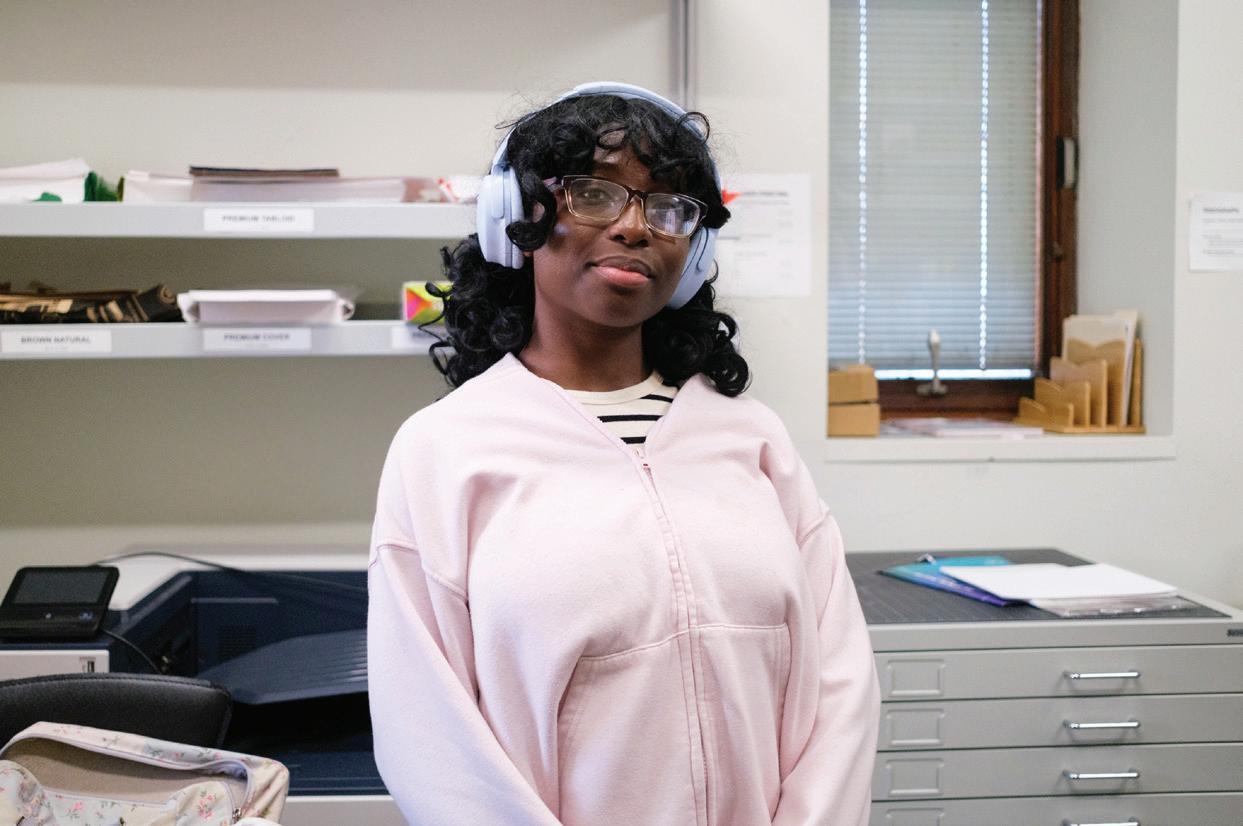November:


November:

BY AVA WANG, OUTREACH CHAIR
This week, The Stute had the pleasure of interviewing Louis Oh, the Schaefer School of Engineering & Science Lab Manager and Researcher. Oh provided updates on the research and efforts that have gone towards the development of the new ENGR 122 design project, set to launch in Spring 2025. ENGR 122 Field Sustainable Systems with Sensors, often referred to as ‘Design 2’ or ‘D2’ by students, is a part of the engineering design spine. This design course is a 100-level class offered before the engineering disciplines split off into major-specific coursework–meaning that all engineers who graduate from Stevens have completed the course. The early design projects are significant unifying experiences for Stevens engineers and a staple on underclassmen students’ resumes as they begin their search for internships and jobs.
For the past few student cohorts, the culminating design project of the ENGR 122 course has been an autonomous robot, where students have been tasked with designing and constructing a 3D-printed robot capable of receiving LiDAR communication via an MQTT server. Students were expected to develop a basic linear
algebra function to direct the robot along a course to reach four target locations while avoiding obstacles de tected by ultrasonic sensors. The success of the student’s work was graded upon ob jective completion: reach ing all four targets in under three minutes accounting for 100/150 points, with -5 point deductions for every collision. Additional points were awarded for every sec ond under the three minute mark, and deducted for ev ery second over.
The highest scorers from each course section moved onto the course-wide Gallois Autonomous Robot Compe tition taking place concur rently with the Innovation Expo. Cash prizes of $1000, $500, and $250 were up for grabs for the teams with the three highest scores.
The student newspaper of Stevens Institute of Technology, and creator of Attila the Duck. www.thestute.com
TikTok @thestute Instagram @thestute facebook.com/stevensthestute

In Spring 2025, the ENGR design project will shift to a new autonomous boat chase-and-catch style competition. Oh informs that inspiration for the change was rooted in a desire for more variation in the projects from year to year, as there were concerns about project repetition and design stagnation. The new project objectives aim to swap things up and keep ideas fresh, while placing a larger emphasis on the ‘systems’ portion of the ENGR 122 Field Sustainable Sys-
SEE BOAT PAGE 2
BY EVAN PAPAGEORGE, HEAD COPY EDITOR
Researchers within the Charles V. Schaefer School of Engineering and Sciences have developed an innovative AI-powered quantum sensing method that enables artificial intelligence to discern surface textures. This breakthrough, achieved by a team at the Center for Quantum Science and Engineering (CQSE), marks a step toward giving AI a sense of touch, a complex capability beyond current vision-based systems.
AI has demonstrated proficiency in seeing and interpreting visual information through computer vision and object recognition for years. However, replicating the human sense of touch has yet to be discovered. “AI has more or less acquired the sense of sight,” explains Yong Meng Sua, a Research Assistant Professor of Physics, “but it has not developed a human-like sense of touch to differentiate, for instance, the roughness of newspaper paper versus the glossiness of magazine paper.”
The team, led by CQSE Director and Physics professor Yuping Huang, has over-
Surviving on caffeine, denial, and hoping the semester ends before our energy does. We’re halfway there! NEWS (1-3)
come this limitation using a unique blend of quantum optics and artificial intelligence. Working alongside doctoral candidate Daniel Tafone and Luke McEvoy ‘22 M.S. ‘23, they crafted a sophisticated setup that uses a photon-emitting laser and an AI model capable of analyzing surface textures with remarkable accuracy.
Their method, recently published in Applied Optics, involves shooting a rapid series of light pulses at a surface, which then reflect to the sensor, carrying distinctive patterns of “speckle noise.” Traditionally seen as a hindrance to clear imaging, these noise patterns provide a wealth of information that reveals fine details about the surface’s topography when processed by the team’s AI model. The method allowed the researchers to analyze variations in texture as subtle as a few micrometers, even down to surfaces smoother than the width of a human hair.
“We use the variation in photon counts across different points of illumination on the surface,” Tafone said. This approach allowed them to accurately analyze
SEE AI PAGE 2
PULSE
BY JOSEPHINE CHOONG, STAFF WRITER
The Hoboken PATH will close from January 30 at 11:59 p.m. until February 25 at 5 a.m. During the closure, there will be critical repairs and improvements made to the station. While the closure will be a major inconvenience for many students, additional travel options will be available between New York and Hoboken.
The extended closure allows for three repair projects to happen simultaneously. First, the PATH will
replace its in-station tracks and the Hoboken Interlocking, a system of tracks and switches allowing the two tunnels to access the tracks. Without the extended closure, those repairs would require four complete weekend shutdowns and an additional 50 consecutive days of reduced services. Meanwhile, 4,500 linear feet of track will be fixed in the two tunnels leading to the station. Finally, the concrete walking spaces through the station will be repaired, and staircases between the station’s mezzanine and platform levels will be replaced.
Your feedback is the secret ingredient in the Fall 2024 Dining Survey
BY JIYA JAISINGHANI, LAYOUT EDITOR
Every semester, the Office of Residential and Dining Services (RDS) sends out a mass email encouraging the student body to complete a comprehensive dining survey. As a student, it is important to understand how the survey is created and whether or not your opinions are taken into consideration. The Stute spoke with Madison Goslin, Senior Marketing Specialist for Dining Services, to understand how the voice of the student body impacts dining on campus.
The dining survey is created by a third-party company, Innovative Hospitality Solutions (IHS). Stevens has little to no say about what is asked on the survey because IHS’s job entails auditing the school as well as maintaining the quality and service of the dining experience on campus.
Once the survey results are in, IHS creates a lengthy presentation with all the statistics and presents it semesterly to the RDS Office. Goslin also creates her own presentation and highlights the largest issues that arose in the current semester. They both propose certain changes based on the student body’s responses and
create a joint solution plan to fix the enumerated problems. IHS also works with many other colleges and universities across the country, so when some aspect of the dining experience is ranked unusually low, they can also compare those results to other campuses to find an explanation.
Goslin assured that the relationship with Innovative Hospitality Solutions allows for changes in the best interest of the school and its students. Stevens can not simply make decisions to change certain aspects to the dining halls, since they have to run it by IHS and IHS has to run their changes by Stevens.
The survey consists of seven categories that IHS believes to be what makes or breaks the dining experience at a university. These seven categories include Communication/Outreach/ Marketing, Customer Service and Hospitality, Dining Atmosphere, Food Quality and Variety, Hours of Operation, Ordering Technology, and Value and Promotions.
The survey goes down the list of categories and asks if the student is satisfied or dissatisfied with the overall experience in all of the dining halls. It then goes
SEE DINING PAGE 3

The new stairs will have improved visibility and will be wider and safer. These upgrades are a part of the PATH Forward program, a $430 million investment to improve the 116-year-old PATH system. The two-year project will focus on enhancing speed and service reliability, as well as address the lingering corrosive seawater damage from Hurricane Sandy in 2012. Other improvements include floor reconstruction, wall tiling, LED light upgrades, and a new fire system installation. The rehabilitation was approved by the New Jersey Historic Preservation Office to preserve the station’s historic character.
Kevin O’Toole, Port Authority Chairman, recognizes the challenges the closure brings. “The PATH system is a vital connection in our region, and this work is crucial to ensuring it remains safe, reliable, and efficient for the thousands who depend on it every day,” O’Toole states. “We appreciate the patience and understanding of our riders as we work to strengthen this essential in-
Stevens Chefs receive Hoboken grant to encourage sustainable cooking

BY EVAN PAPAGEORGE, HEAD COPY EDITOR
Hoboken recently deployed a groundbreaking community-driven initiative to address food waste and sustainability through cooking. The Green Cooking Initiative, led by the Stevens Chef Living Learning Community (LLC) through the Office of Residential Education, focuses on culinary arts and transforms how residents think about food waste and its environmental impact. This project, funded by the Hoboken Youth Climate Action Fund, empowers young cooks to make a difference by reducing waste and promoting sustainable cooking practices.
The Green Cooking Initiative takes place at the Stevens Chefs’ house at 1036 Park Avenue, where

students passionate about cooking
from
The initiative is turning outdoor garden boxes into a year-round herb and vegetable garden to reduce waste. Plans include a semi-permanent greenhouse and a composting program. These changes will provide fresh cooking ingredients and recycle food scraps back into the garden, minimizing waste and enriching the soil. According to residents, led by Resident Assistant Jessica Brigante, the garden will also foster a sense of community and shared responsibility for sustainability, encouraging residents to think about food as part of a closed loop that benefits both people and the environment.
The Hoboken Youth Climate Action Fund, which SEE CHEF PAGE 3

Volume CXXI No. 11
Executive Board
EDITOR-IN-CHIEF.....................................ISABELLA ZIV ‘25
BUSINESS MANAGER...........................TANYA AVADIA ‘26
MANAGING EDITOR..............JEREMIAH CHINWENDU ‘25
LAYOUT EDITOR...............................JIYA JAISINGHANI ‘27
OUTREACH CHAIR.........................................AVA WANG ‘25
DIGITAL MANAGER..................................ABBY JACOBS ‘27
SECRETARY.........................................NICOLE GIARDINO ‘25
HEAD COPY EDITOR....................EVAN PAPAGEORGE ‘26
Editorial Board
NEWS EDITOR........................................BEN KNOBLOCH ‘25
SCIENCE EDITOR.................................RIYANA PHADKE ‘27
OPINION EDITOR...................................TASHA KHOSLA ‘25
SPORTS EDITOR...............................RUTHIE MULLISKY ‘26
FEATURES EDITOR..................................TIANNA SPITZ ‘27
PULSE EDITOR.......................................MIA PETROLINO ‘25
Operations Board
HEAD PHOTOGRAPHER RAFAEL LEE LI ‘25
Layout Team
ASSIS. LAYOUT EDITOR...........................SHREYA ROY ‘27
ASSIS. LAYOUT EDITOR...............EILIYAH SAROWAR ‘28
DELIVERY BOY.........................................JONATHAN LAI ‘28
Staff & Contributors
Josephine Choong
Jeylan Jubran
Disha Gohil
Aditi Shilawat
Camryn Winant
Charlie Beall
Abby Thomas
Prisha Vagvala
Madison Heller
Kevin Castner, Jr.
Stephen Pachucki
Jack Scherban
Emily Martinez Fiona Shi
GENERAL.........................................EBOARD@THESTUTE.COM
EDITOR-IN-CHIEF.........................EDITOR@THESTUTE.COM
ADVERTISING.............................BUSINESS@THESTUTE.COM
OFFICE.................................UNIVERSITY CENTER ROOM 216B
NOTICE A MISTAKE?
Email us at eboard@thestute.com.
All opinions and editorials reflect the views of their respective author(s). No Part of The Stute may be reproduced in any form, in whole or in part, without the written consent of the Editor-in-Chief. Cited references of The Stute are permitted.
All members of the Stevens community are able to submit a Letter to the Editor to be published in The Stute. Letters must refer either to a piece published in The Stute or to The Stute in general and must be between 400 – 800 words in length. Submit letters to editor@thestute.com with your name and title (when applicable) or using our Google form. For writers who wish to write a Letter to the Editor anonymously, please see our policy on anonymity.
The Editorial Board reserves the right to choose whether or not to publish a submitted Letter to the Editor based on a majority rule vote, and additionally reserves the right to edit letters for clarity or request authors to revise. Provided that the author approves the final version, The Stute reserves the right to edit letters according to our copy editing procedures, defined in our policies.
All members of the Stevens community are able to submit a standalone opinion piece (otherwise known as an Op-Ed) to be published in The Stute. Op-Eds must be between 400 – 800 words, but longer submissions will be considered on a case-by-case basis. To submit an OpEd please email eboard@thestute.com with your name and title (when applicable) or using our Google form (tinyurl.com/submit-t0-stute). For writers who wish to write an Op-Ed anonymously, please see our policy on anonymity.
The Editorial Board reserves the right to choose whether or not to publish a submitted Op-Ed based on a majority rule vote, and additionally reserves the right to edit Op-Eds for clarity or request authors to revise. Provided that the author approves the final version, The Stute reserves the right to edit Op-Eds according to our copy editing procedures, defined in our policies.

CONTINUED FROM PAGE 1
tems with Sensors course namesake.
The autonomous boat project will be a head-to-head style competition, unlike its timed predecessor. Two design groups will place their boats in a table top tank with a camera sensor placed above it. Instead of utilizing LiDAR to receive input on boat location, the autonomous boats will use camer
The new course will have an obstacle in the center that the boats must circularly navigate about. The boats will chase each other around the course, until the winner catches the loser. Winners will progress to the next round, bracket-tournament style. Oh kept in mind that students enjoy the competition element of the design project, and the new bracket style of competition allows more students to compete directly with one another, not just the top competitors from each section.
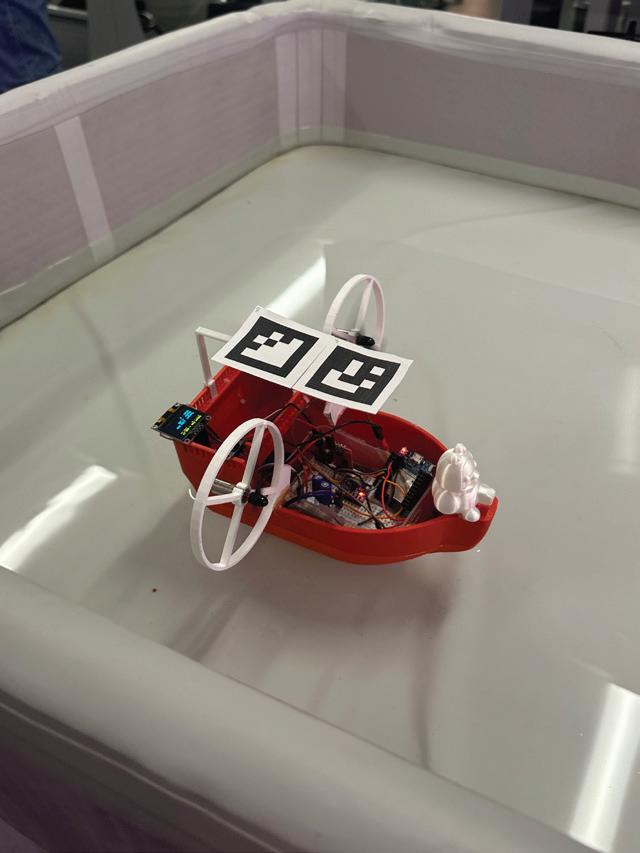
Design teams will design their own hull and keel and conduct a buoyancy analysis in the SolidWorks computer-aided design (CAD) software prior to 3D printing them. The sub six-hour printing requirement will be maintained. Oh informed that planning for this design project change began back in summer 2023. In order to make the project more approachable for first-year engineering students, and suitable for a 2-credit course load, a team of graduate and undergraduate researchers worked to develop aspects of the project, so the first-years can ‘plug and play’ with the different elements
while still gaining exposure to basic proportional integral derivative (PID) tuning. Elements such as the code for the boat coordinates and functions for moving the boat in a straight line and turning were developed by Professor. Chang Beom Joo, and students Guoqing Zhang, Vanshika Mehal Mehta, Joel Martsinovsky, Samuel Kaz, Rahul Bhavesh Doshi and Daniel Ahn from the Open Integration Lab and Teaching Lab. Oh aptly described it as a win-win situation, where the ENGR 122 students gain exposure to sensors and systems at an experience-appropriate level, and the graduate students gain significant experience in course development. Oh and the team plan to continue a rotation of ENGR 122 projects every few years to keep it fresh, meaning that the autonomous robot may make a return in a future years. Oh teased that the team is already working on the preliminary stages of the next project: a sand buggy race. The Fall 2024 engineering cohort will be the first to experience the new autonomous boat ENGR 122 project this spring, so keep your eyes peeled for the competition results next semester!


PATH CONTINUED FROM PAGE 1
frastructure.” The Port Authority planned the closure to coincide with seasonal lower daily ridership and collaborated with outside experts to develop an appropriate work plan.
The Spring Semester starts on January 21. Not including Presidents’ Day and weekends, there will be 24 school days without PATH access. Alternate ADA-accessible travel options, many with increased services, will be offered to accommodate this. There will be
a free shuttle bus between Hoboken, Newport, and Exchange Place to connect to the PATH. The shuttle will run 24/7 and have service every five to 15 minutes. Another option is taking the Hudson-Bergen Light Rail between the three stations. Additional service is provided on weekdays between 6 to 10 a.m. and 3 to 7 p.m.
Due to the repairs, Newport and Exchange Place will have more service running at peak hours. Newport trains will arrive every two to four minutes, and Exchange Place trains will arrive every five minutes or less during rush hour. On weekdays only, there will be a temporary train between 33 St.
and the World Trade Center. Furthermore, the frequency of the NJ Transit Bus 126 will increase. The 126 Bus connects Hoboken Station to the Port Authority Midtown Bus Terminal, stops at Hoboken Terminal, and points along Washington Street. Travelers may even take the NY Waterway ferry between Hoboken and New York, which cross-honors PATH customers and has additional service between the two stations.
Students can stay updated with the RidePATH app or attend the various public info sessions. The last session will be held virtually on December 10 from 6 - 7:30 p.m.
industrial materials, such as sandpapers with textures ranging from 1 to 100 micrometers, achieving a root-mean-square error (RMSE) of only 4 micrometers. This level of accuracy is comparable to stateof-the-art profilometer devices, which are the current industry standard.
The potential applications for this new capability are significant, ranging from healthcare diagnostics to manufacturing quality control. “In medicine, this could aid in skin cancer detection by iden-
tifying microscopic differences in skin roughness that are too subtle for human eyes to detect,” Huang explains. Such distinctions assist doctors in identifying cancerous growths more effectively, avoiding misdiagnoses of benign conditions.
Manufacturing industries could also benefit. Detecting tiny material flaws could prevent defects that lead to more significant mechanical failures, improving the safety and durability of components used in everything from aerospace to automotive production.
The quantum-AI fusion behind this touch-sensitive technology may have implications for widely used sensing technologies like Li-
DAR, which operates in autonomous vehicles, robots, and smartphones. By adding a “sense of touch” to these devices, the team envisions improved detection capabilities for surface properties at minuscule scales, opening doors for applications in both consumer technology and critical industrial functions.
As Stevens continues to push the boundaries of AI and quantum technology, this development exemplifies the institution’s drive toward practical solutions that address real-world challenges. The combination of interdisciplinary studies and innovations poises Stevens to continue pioneering AI development. AI CONTINUED FROM PAGE 1
CONTINUED FROM PAGE 1
into detail and asks if all these categories were met for the specific halls, which include America’s Cup, Cannon Cafe, Pierce Cafe, Pierce Dining Hall, Pi Kitchen, all UCC Marketplace stalls, and delivery from outside restaurants via the Stevens Grubhub app. From that point on, there are two short response questions that invite the student to expound on elements of the dining experience that satisfied or failed to satisfy his expectations.
This year’s survey is significantly shorter than in past semesters. Goslin shared that the length of the survey was found to have harmed response rates and that out of about 3000 students on the meal plan last year, only 905 responses were collected. To combat this problem, IHS decided to make
the survey more appealing and easier for students to complete, now only taking approximately four minutes from start to finish.
When asked how each student’s opinions or complaints were taken into consideration, Goslin mentioned that most data-analyzing software catches common words or themes and groups them. These commonly grouped words are looked over and addressed in those semesterly meetings. If students do not fill out the form, there are no complaints to group together and address! It is important to fill out the form, and chances are, if you have a complaint, someone else has the same one.
Every change that is made is influenced by the student’s survey responses. So fill out the form, be honest, be critical, and voice your complaints so that they can be properly addressed!
Access and complete the dining survey at https://www.survey-
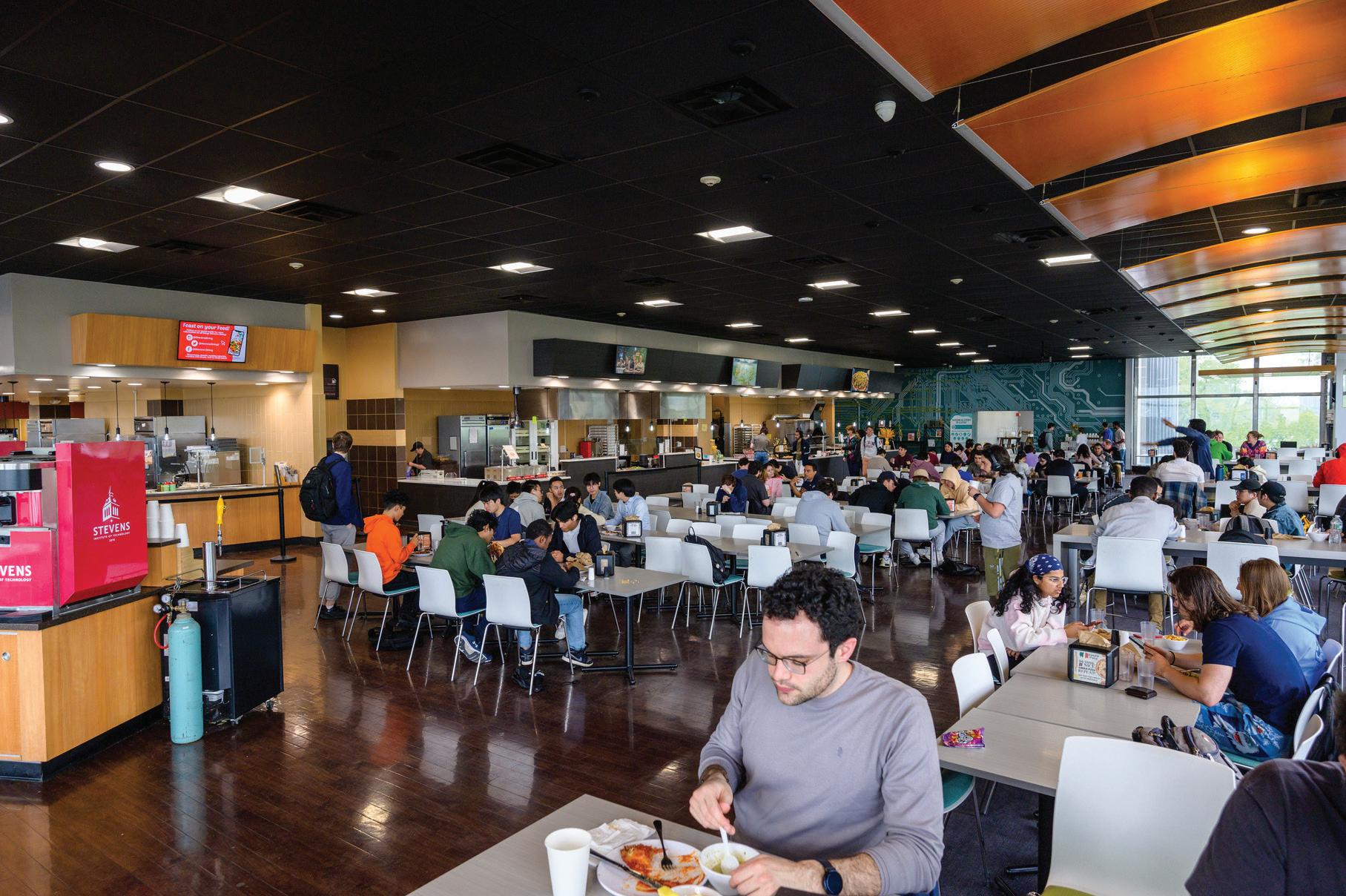
CONTINUED FROM PAGE 1
backs this initiative, was launched by Mayor Ravi S. Bhalla in collaboration with Bloomberg Philanthropies to support youth-led climate action projects across the city. With grants ranging from $1,000
to $5,000, the fund intends to encourage young residents aged 15 to 24 to spearhead impactful climate initiatives. The Green Cooking Initiative joins a list of innovative projects funded by the grant, all aimed at increasing climate resilience and fostering sustainability in Hoboken.
Local officials are enthusiastic
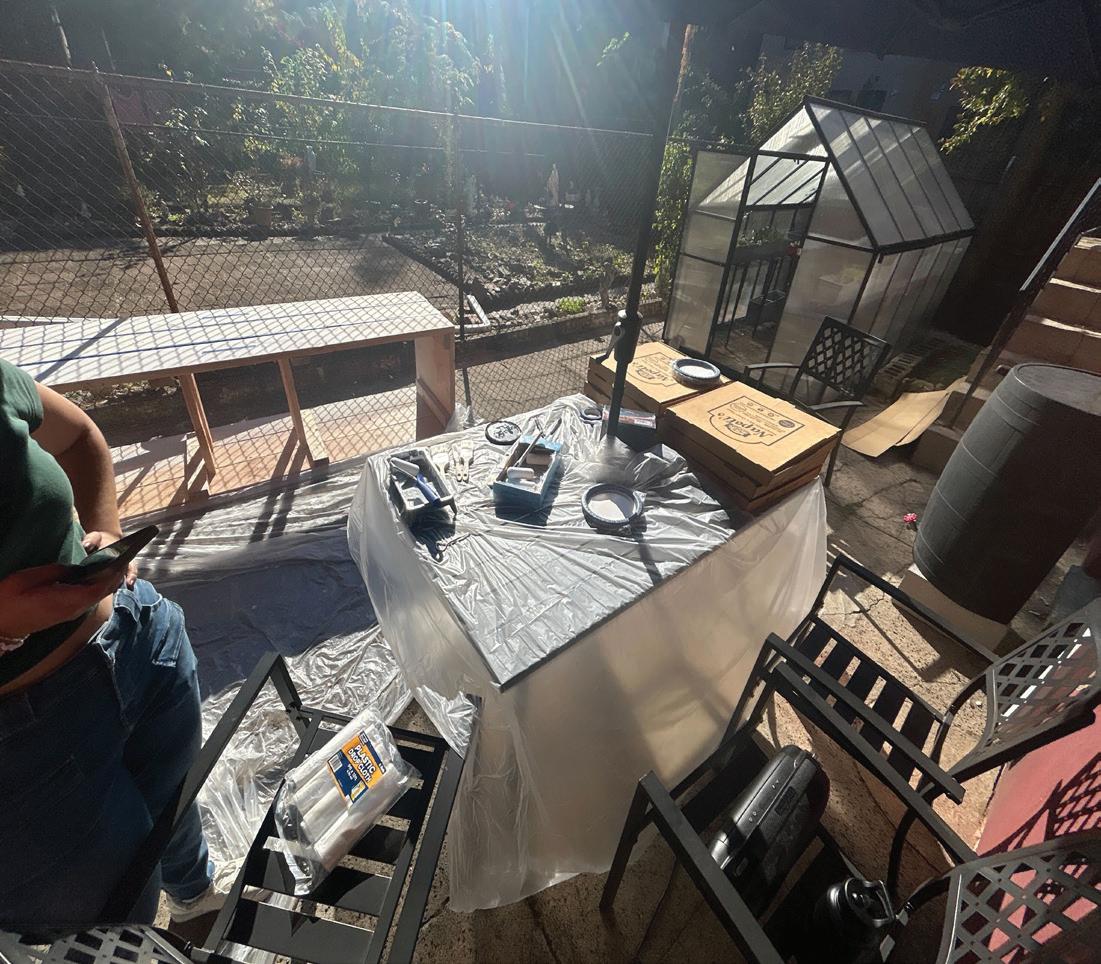

v i t y a n d f l a v o r k n o w - h o w w i t h m y s t e r y i n g r e d i e n t s a n d a r a c e a g a i n s t t h e c l o c k
S i g n u p b e l o w t o s e c u r e y o u r s p o t i n t h i s i n t e ns e , f u n - f i l l e d c o m p e t i t


tive’s impact on the city’s climate goals. Brenda Kessler, a member of the Hoboken Green Team, highlighted the value of youth-led projects in creating long-term sustainable habits. “By supporting projects like this, we’re investing in the future of Hoboken,” Kessler said. The initiative also aims to educate the community on composting and gardening. Through workshops, students and residents will learn about sustainable food practices, including the benefits of using locally grown produce, reducing single-use items, and composting. These efforts align with Hoboken’s broader environmental goals, which include waste reduction and increased food security through local urban agriculture.
Stevens Chefs is preparing to expand its program by inviting the public to help with planting, harvesting, and composting, fostering a more profound sense of environmental stewardship. The group also hopes to inspire other communities and schools to adopt similar initiatives, amplifying the impact of their work. Students from the community share their culinary creations often on @chef_ducks on Instagram. Anyone interested in joining this community for the 2025-2026 school year can visit the online site for Living Learning Communities and submit an Individual Resident Application by Friday, December 13. No prior cooking experience is required!
As Hoboken embraces these youth-led climate projects, initiatives like the Green Cooking Initiative demonstrate the potential for local action to make a significant environmental impact. As Kessler put it, “The creativity and commitment of young people are crucial to driving the change we need to see.”
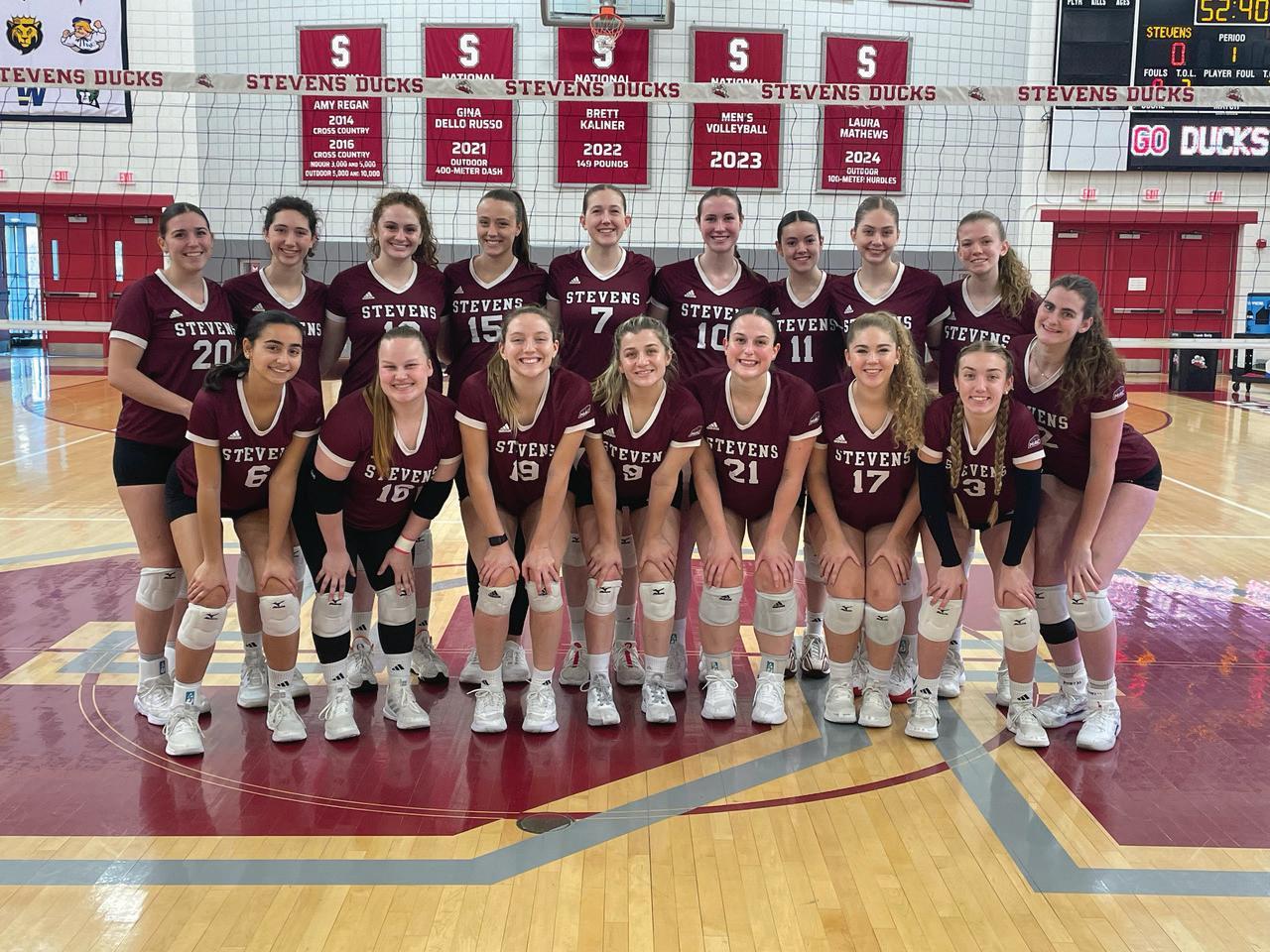
BY JEYLAN JUBRAN, STAFF WRITER
For those unfamiliar with the Society of Women Engineers (SWE), welcome! SWE is a collegiate chapter of a national organization dedicated to empowering women in engineering through professional development, technical skills training (thanks to collaborations with the Stevens Makerspace), and community-building social events. And here’s a secret—it’s not exclusively for women! Anyone interested is welcome to join. Today, I’ll dive into some of SWE’s recent activities, including how you can get involved.
Recently, The Stevens SWE chapter took 24 members to attend the national SWE conference, WE24, held in Chicago, IL. The group consisted primarily of juniors and sophomores. Out of these 24 attendees, six left with job offers, and all left with invaluable contacts that will benefit their careers. From enjoying deep-dish pizza to visiting the iconic Bean, members experienced Chicago while connecting with SWE chapters and employers worldwide. With over 450 companies in attendance, the conference was a record-breaking and overwhelming success. To support its most dedicated members, SWE will continue to offer the opportunity to attend the conference, hosted in New Orleans next year. To be considered, you must attend at least two SWE-hosted events in the Spring semester and are encouraged to sign up early. SWE covers registration, hotel, and
flights; students only need to provide their own meals (breakfast is included). “This truly couldn’t have been possible without Dean Zu and the SES department’s generous contribution,” shared SWE President Elizabeth Halton, a 3/4 Civil Engineering student.
Upcoming Events
If you find yourself free on Wednesday nights, stop by SWE events and GBMs at 9:15 p.m. for a night of hanging out, professional development, crafting, de-stressing, and great conversation (plus good food!). The e-board is always available to offer advice and answer any questions. Here’s what SWE has planned for the rest of the semester:
November 20: Makerspace Workshop with SWE and WIMSE from 6 to 8 p.m. in Makerspace ABS 104
November 20: Earring Making for Dressember at 9:15 p.m. in Babbio
104
December 4: Lunch and Learn with Everest from 3 to 5 p.m., location TBD
December 10: “Distress with the Women of Stevens” co-hosted with SWIB and SWICs at 9:15 p.m. in UCC Gallery
If you’re looking to expand your network, gain new skills, or simply make friends with a passion for empowering each other, then SWE could be the place for you! Whether it’s attending a national conference, crafting in a relaxed setting, or learning from industry professionals, there’s always an opportunity to get involved and grow. So don’t hesitate — swing by a meeting, join an event, and experience the SWE community for yourself.

Greeks
BY JEYLAN JUBRAN, STAFF WRITER
Greek life at Stevens isn’t just about social events and lifelong friendships—it’s also a community that gives back in countless ways. This November, sororities and fraternities across campus are putting their passion into action through various service initiatives, from supporting mental health to keeping our campus clean. Here’s a look at how Greek organizations are making a difference this month: Alpha Phi Omega (APO), a gender-inclusive service fraternity, known for its dedication to community service, runs a weekly campus and Hoboken trash cleanup, helping maintain a cleaner and more sustainable environment. This commitment continues even beyond their current National Service Week, during which they host unique events like the Donation Trivia Night and Kindness Rocks, which are some of the biggest events during their Kindness Week. APO also organizes Project Linus Blanket Making, where members create cozy blankets by tying two pieces of fabric with fringed edges and donating these to children in need. This meaningful work is the primary reason many members join APO.
Sigma Phi Epsilon (SigEp) makes a difference academically by hosting review sessions for challenging courses—personally, their differential equations reviews have been a lifesaver! SigEp’s biggest fundraising efforts take place in October and November, with events supporting breast cancer research and men’s mental health awareness for “Movember.” From small-scale events like pie-ing a brother to large-scale fundraisers, including an upcoming Mini Golf
Event where their house transforms into a 10-hole golf course, SigEp brings the campus together through community-oriented activities that make a real impact.
Delta Phi Epsilon (DPhiE), in partnership with Beta Theta Pi (Beta), is running a Food Drive from November 5 to November 23. Donation boxes outside their respective houses are collecting non-perishable items to be donated to the Hoboken Homeless Shelter, supporting the local community during the holiday season and making a difference for those in need.
Sigma Delta Tau (SigDelt) actively supports mental health initiatives, especially around suicide prevention. Every year, SigDelt participates in the Out of the Darkness Walk, raising awareness and funds for suicide prevention efforts. They also post mental health resources and foster a community of support among their members. One of their most popular events, the French Fry Fundraiser, is a crowd-pleaser, with proceeds going to charities focused on mental health causes.
Alpha Phi (APhi) focuses
its philanthropy on heart health, specifically raising awareness and funds for women’s heart health research. Since most heart research has been conducted on men, APhi aims to address the gap by raising funds and educating the public. Their events often have a heart theme, from their Red Dress Gala, where donations are collected with support from major brands like Sephora, to Mr. Heartthrob, a lighthearted competition where fraternity brothers compete to win the title of Mr. Heartthrob, all in the name of raising money for women’s heart health.
Each of these initiatives demonstrates that Greek life at Stevens goes beyond traditional expectations. By tackling local issues, supporting each other academically and emotionally, and raising funds for impactful causes, the Greek community truly embodies what it means to give back. From the uplifting messages of APO’s Kindness Rocks to SigEp’s academic support and SigDelt’s focus on mental health, Stevens Greeks are showing that they care deeply about the world around them.
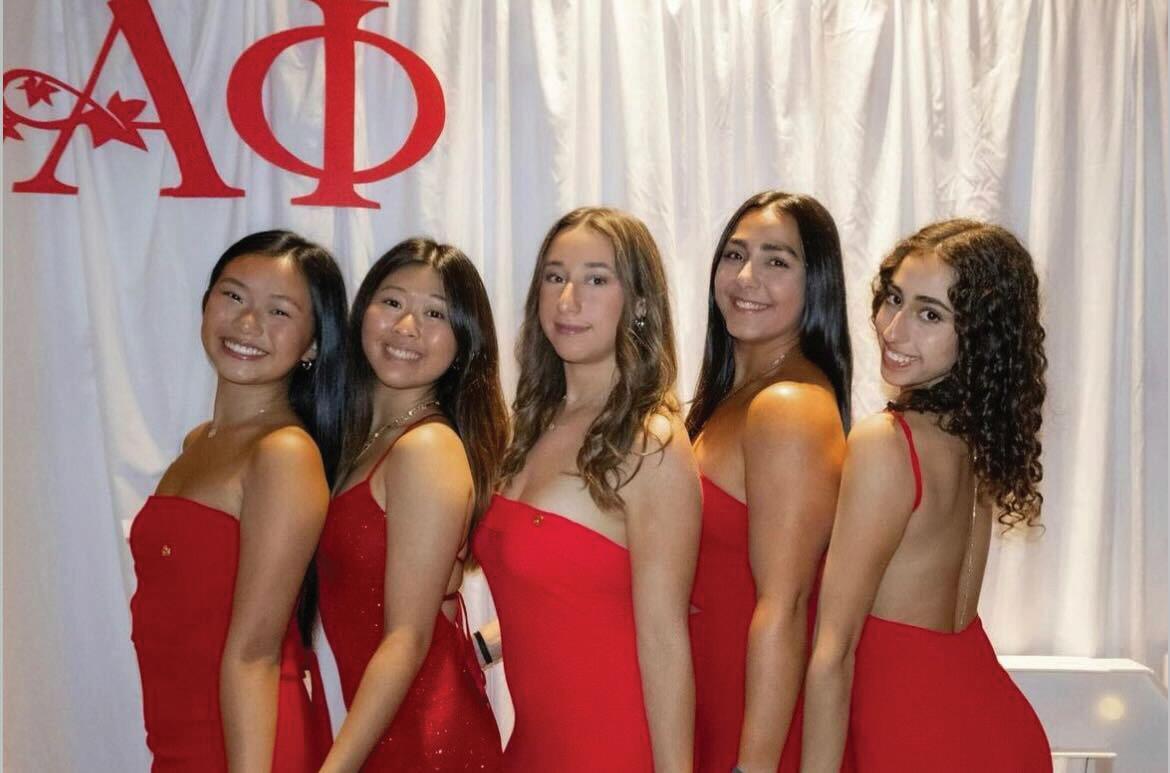
BY JOSEPHINE CHOONG, STAFF WRITER
On November 6, the inaugural Stevens Symposium for Undergraduate Research featured 110 undergraduate students proudly displaying their summer and ongoing research. It was an excellent opportunity to network and learn more about undergraduate research. Despite the emotions following election day, the symposium had a solid turnout, with 120 to 160 people in attendance. There was a wide variety of research, from microrobots navigating through the arteries of stroke patients to exploring the impact of polyvinyl alcohol (PVA) fiber on lightweight 3DPCC. The symposium itself was initiated by SGA leadership and Dr. Eve Riskin, the Dean of Undergraduate Education. The planning was a collaboration between staff from the Office of Undergraduate Academics, the Provost’s Office, and University Events. Previous fall semesters had research events for only certain cohorts to present within a single poster session. Andrés Mansisidor, Director of Undergraduate Research and Fellowships, states that the symposium’s objective was to allow all undergraduates a chance to showcase their research projects. To that end, it has been expanded to a full-day event for all students to make the research learning experience more accessible. The symposium had both morning and afternoon poster sessions, an AI Research Summer Fellowship Poster session, and several 15-minute student research talks. making the two sessions more en
gaging and robust to increase turnout. Moreover, there will be discussions about the ideal timing of the event, like having it closer to the beginning of the semester. Other potential ideas include opening the event to students and faculty from nearby universities or to graduates. While Mansisidor notes the benefits of having interactions between undergrad and graduate researchers, they explain it would require them to figure out the logistics of space, funding, and event attendance. In the meanwhile, emphasis will be placed on promoting departments’ research days in the spring semester. There, both undergraduate and graduate students will have the opportunity to present their research. Other high-profile research universities that host regional or national undergraduate research conferences could serve as a model for possible expansion. However, that depends on its feasibility and interest from students and faculty. Furthermore, there will be poster design workshops ranging from centering research questions and hypotheses, balancing the ratio of text to graphics, formatting legends on data charts, and designing effective graphics.
Mansisidor states that communicating research methods is critical in the pursuit of science. They want to provide opportunities and tools for students to present their research to everyone within and outside their fields. “We have a lot of great research being done at Stevens,” Mansisidor remarks. “It was inspiring to learn more about it and see undergraduate researchers so
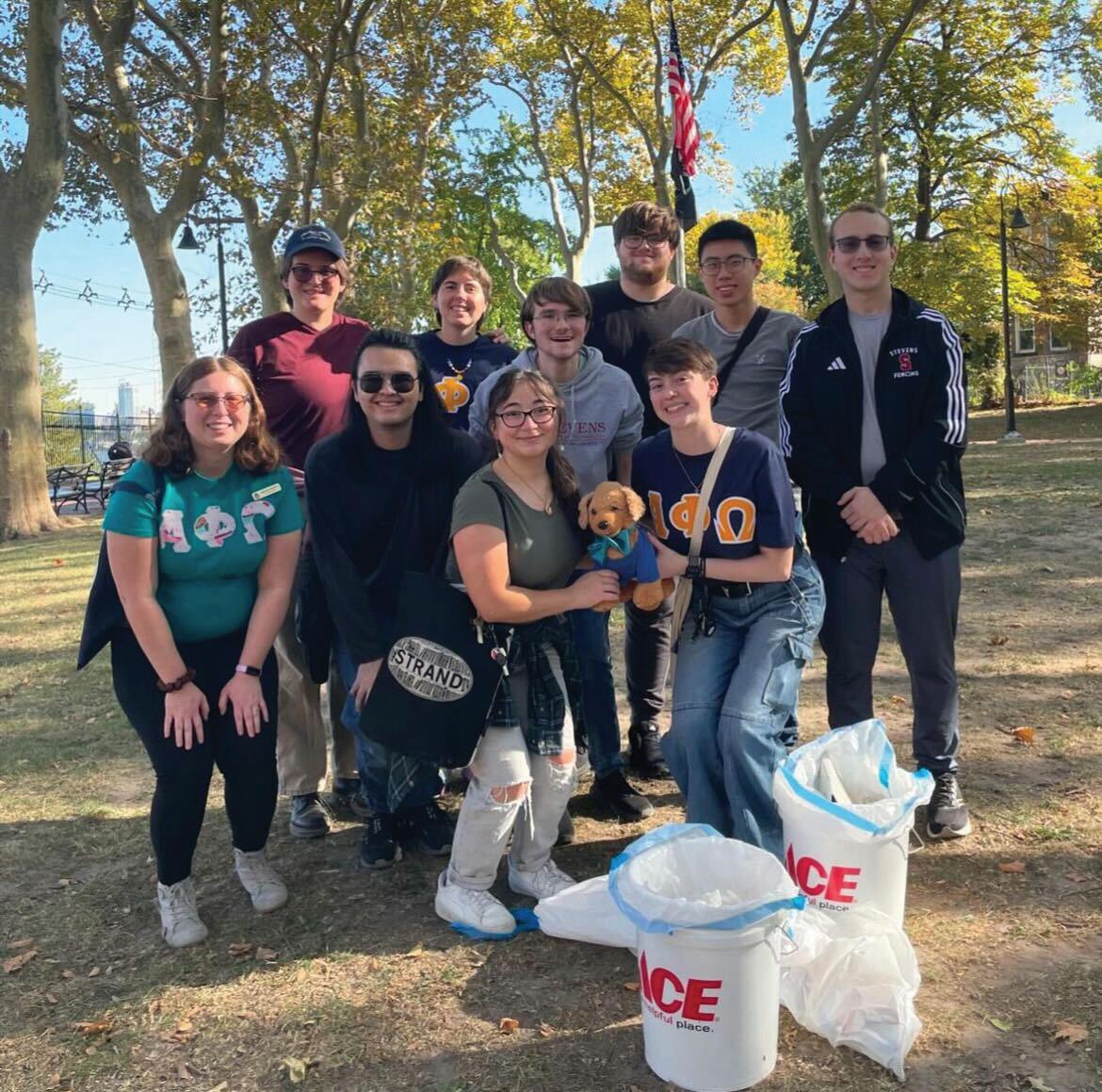


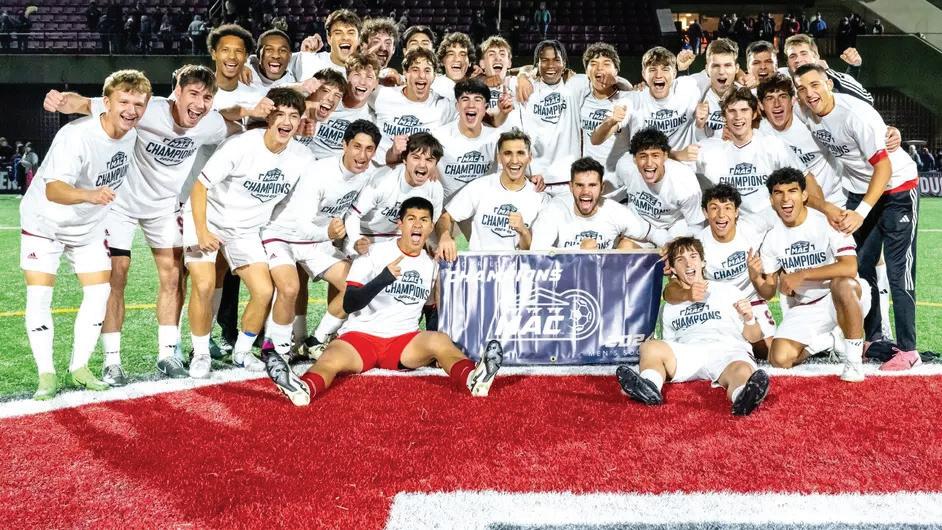

BY CAMRYN WINANT, SPORTS WRITER
On October 5 and 6, the men’s and women’s soccer teams advanced to the Middle Atlantic Conference (MAC) Freedom Championship games with 3-1 wins over Lebanon Valley College and DeSales University, respectively. On October 9th, the men’s soccer team won over DeSales while the women’s team fell to Misericordia University in the MAC Freedom Championship game.
The men’s soccer team was quick to get an advance on Lebanon Valley’s one goal made in the first half, which was scored by senior Emerico Vespucci, sophomore Omar Martinez, and first-year Martin Fields. The first goal was delivered by Fields only 32 minutes in, tying up the game 1-1, until Vespucci landed his kick and doubled the Ducks lead. That score held for the
rest of the first half and the majority of the second half until the final 10 minutes when Martinez scored the winning goal. This win advanced the three-time defending MAC Champions to their fourth championship, and it marked the Ducks making it to the conference tournament finals 19 out of 21 seasons.
The championship game was played four days later against DeSales, and the Ducks were quick to play an offensive game. With a goal from seniors Adam Berrocal, who was named MAC Freedom Tournament MVP, and Terry Thompson, the Ducks were able to bring home their fourth straight conference tournament championship. Berrocal scored the first goal in the 12th minute with an assist from junior Ben Goldberg. Only a couple of minutes later, DeSales evened out the score, but graduate student goalkeeper Guillermo Castane-
da-Chang was able to keep it at that until Thompson gave the Ducks the lead in the 52nd minute. This 2-1 win made the Ducks conference champions.
The women’s soccer team dominated DeSales with a three-goal second period in the MAC Freedom Semifinals, with goals made by graduate student Elsa Bley and first-years Alina Friz and Sophia Murphy. With only nine shots being attempted in the first half, the Ducks outshot the Bulldogs, and the first half ended with a score of 0-0. Only 35 seconds into the second half, the Bulldogs scored, giving them the advantage. Two minutes later, Bley sent a shot in, tying up the game, but it was not until the 65th minute that Friz scored the second goal. The third goal was scored by Murphy with an assist from senior Olivia Castro, and for the final 20 minutes of the game, ju-
nior goalkeeper Kenny Donley was able to keep the ball out of the net. The 3-1 win sent the Ducks to the championship game, which they have successfully done every year since 2015.
The championship game was against Misericordia, where the Ducks fell to the Cougars. Despite attempted shots made by graduate students Gab Aloe and Nicole Angelini, juniors Sarah Wnorowski and Lauren Alley, and first-year Malia Chopra, Friz, Murphy, and Donley, the Ducks were unsuccessful in scoring a goal. The Ducks outshot the Cougars 14-9, but Misericordia was still able to score a goal in the second half, ending the game with a score of 1-0.
The men’s soccer team will be continuing onto the NCAA Tournament where they will be facing Muhlenberg College this Saturday at 1:30 p.m. in Amherst, MA.
BY CAMRYN WINANT, SPORTS WRITER
On November 10, the Stevens men’s and women’s fencing teams attended the Vassar Invitational in Poughkeepsie, NY, where they competed against a slate of competitive opponents.
The men’s team came away with a final score of 4-2 after competing against Long Island University, Vassar College, Cornell University, Cleveland State University, Yale University, and Sacred Heart University. The Ducks lost to Yale (621) and Sacred Heart (11-16).
Against Long Island University, the men’s epee team pulled a perfect 9-0 score, with men’s foil and sabre scoring additional wins to allow a decisive defeat over the Sharks. Sophomore Noah Tumibay, junior Andrew Yurovchak, and senior Nicholas Smith posted 3-0 for epee, and first-year Dev Badlani went 3-0 for foil.
The men’s team pulled through against Cleveland State with perfect 3-0 scores from second-year Tyler Kometani in sabre, firstyear David Trubetski in foil, and Yurovchak in epee. Almost every fencer on the men’s lineup contributed a win to give the Ducks the victory.
Against Vassar College, the foil squad pulled through with a 6-3 tally, with the epee and sabre squads registering four wins each to pull the men’s team through.
Against Cornell University, epee went 6-3, with Tumibay, sophomore Riley Parker, and Smith each only dropping one bout. Second-year Cyrus Erachshaw pulled in two wins for sabre, while each foilist pulled in one win.
At the end of the day, the men’s fencing team came away with some incredible highlights. Yurovchak earned eleven victories in the fifteen bouts he fenced. Badlani led the foils with nine victories, and senior John Morreale led the sabre squad with eight wins.
The women’s fencing team went 1-5 on Sunday, taking a victory over Cleveland State but falling to Wellesley, Sacred Heart University, Cornell University, Tufts University, and Denison University.
Against Cleveland State, the epee squad took seven victories, with second-year Grace Hicks pulling a perfect 3-0. First-year Eren Kokes and senior Renny Victoria each took two wins. The foil squad went 6-3, with all three foilists pulling two wins. Sabre added three more tallies as senior Alyssa Ip scored two, and first-year Ash-
lyn Leung brought one more.
The Ducks fell 13-14 against Sacred Heart, with both the foil and sabre squads going 5-4 while epee posted 3 victories. Seniors Sofia Savchuk and Elizabeth MacDonald both posted two wins for foil, while second-year Sasha Craine and Leung won two a piece for sabre.
The women’s epee squad had an impressive showing against Tufts and Dension, posting 6-3 and 5-4, respectively. Craine earned a perfect 3-0 against Wellesley for sabre.
Overall, Hicks led the team with eleven victories on Sunday. Craine and Leung together won 16 of the 21 victories sabre walked
away with. Kokes made her collegiate debut, winning seven of her 17 bouts.
“I’m super proud of the way the women’s team fenced today. Battling twisted ankles, bad knees, and a virus that swept through the campus, the team really picked each other up against some really tough competition,” Head Coach Jim Carpenter notes.
The men’s team will host the MACFA Group “A” vs. Group “B” Meet in Canavan Arena this coming Sunday. The women’s team will continue their season on November 22, where they will face Columbia and Johns Hopkins University.

WOMEN’S AND MEN’S CROSS COUNTRY Metro Regional Championships Galloway, NJ 11
WOMEN’S AND MEN’S SWIMMING Hartwick College University of Scranton Oneonta, NY 1 p.m.
MEN’S SOCCER Muhlenberg College Amherst, MA 1:30 p.m. WRESTLING Auggie Invitational Minneapolis, MN 9 a.m.
WOMEN’S BASKETBALL Brooklyn College Hoboken, NJ 5 p.m.
MEN’S BASKETBALL University of Scranton Hoboken, NJ 7 p.m.
SUN, NOV 17
MEN’S FENCING MACFA
Group “A” vs Group “B” Hoboken, NJ 10 a.m.
WED, NOV 20
MEN’S BASKETBALL
New Jersey City University Jersey City, NJ 7 p.m.
BY ADITI SHILAWAT, SCIENCE WRITER
Everyone loves a sweet treat. However, recently, scientists have found that children who had sugar restrictions in the first 1,000 days from conception, had a 20% less chance of developing hypertension and a 35% less chance of developing type 2 diabetes. Type 2 diabetes is a chronic condition that can lead to long-term health complications, including heart disease, kidney failure, nerve damage, and vision problems. Usually, restriction when the baby is still in the womb is good enough to prevent these conditions, however, the extended use of these restrictions further protects from possible complications.
Before World War II ended,
there were extremely strict restrictions on sugar, where people were only allowed to consume about 41 grams of sugar. These restrictions on sugar ended in 1953 since the need for rationing food was not present anymore. Because of this, the increase in sugar consumption led to more sugar intake and a rise in type 2 diabetes and hypertension, especially in today’s world.
The current recommended intake of sugar is about 25 grams for children two years and older. For children younger than two years, no added sugar is recommended.
Interest and concern in the future health of children who are consuming over the limit of sugar led to a study done recently by Tadeja Gracner, Claire Boone, and Paul J. Gertler. Tadeja Gracner is a research scientist who works
in the Center for Social and Economic Research (CESR) at USC and is a senior economist at the RAND Corporation. She researches and writes about diseases that correlate with obesity, as well as what are its socio-economic causes and risk factors. Claire Boone is an assistant professor at McGill University in the Economics Department and the Equity, Ethics, and Policy Department. Her research is mainly about using behavioral economics to understand and improve health services. Paul J. Gertler is an Economics professor at UC Berkeley and holds many positions, such as the Faculty Director of the Institute for Business & Social Impact and the Scientific Director of the Center for Effective Global Action. His research mainly involves childhood development,
BY RIYANA PHADKE, SCIENCE EDITOR
The 2024 marathon season has officially come to an end, with the New York City marathon on November 3, 2024, capping a year that saw over 800 marathons worldwide. Of these, only seven are recognized as World Marathon Majors. This includes Tokyo, Boston, London, Berlin, Chicago, New York City, and the newest Sydney Marathons. These races are the most prestigious in the world, as runners from all over the world come together to race 26.2 miles to some of the most famous places on Earth. Amateur and elite athletes alike train to be able to compete in World Marathon Majors, with elite runners going for record-breaking times. If you’re dreaming of seeing the world, why not make each mile count?
Running a marathon demands both peak physical conditioning and mental resilience. Physiologically, marathoners tend to have a high VO2 max, efficient cardiovascular systems, and an increased proportion of slow-twitch muscle fibers, allowing them to sustain through the long runs without significant fatigue. They also build up a heightened lactate threshold, enabling faster paces before lactate buildup occurs. Psychologically, runners use strategies like goal-setting and positive selftalk to manage fatigue, especially during the “wall” around mile 20, where glycogen depletion compromises energy stores. Overcoming this mental and physical challenge requires determination, and many experience a “runner’s high,” driven by the release of endorphins and brain chemicals that improve mood and focus. These extreme demands are met head-on in some of the world’s most iconic marathons, where athletes push their limits on challenging courses through various city landmarks.
The Tokyo Marathon is the first major event of the calendar year, taking place on the first Sunday in March. The marathon is the youngest of the World Marathon Majors, as it was first run in 2007 and achieved its status in 2012. The course guides runners from the Metropolitan Government Building in Shinjuku through the city, where runners catch sight of the Imperial Palace, Tokyo Tower, the old town of Asakusa, and more. The run ends at the Tokyo International Exhibition Center.
The Boston Marathon traditionally occurs on the third Monday of April and is the oldest annual marathon in the world. It was first run in 1897 after its organizers were inspired by the marathon races at the 1896 Olympic Games in Athens. This marathon is particularly challenging due to its notable elevation changes, with the infamous and difficult half-mile Heartbreak Hill portion occurring at mile 20. While this marathon used to be exclusively for men, this was amended in 1966 when Roberta Gibb completed the course in 3:21:40. Women were officially allowed to compete in 1972. The race begins at the Hopkinton State Park, where runners pass a variety of attractions, including the Ashland Clock Tower, Natick Center
Cultural District, and The Forever Young Statue that commemorates 61-time Boston marathon finisher Johnny Kelley. The race ends at Copley Square. The London Marathon is known to be one of the fastest courses in the world, as seven world records have been set there. The marathon, which was first run in 1981, was created by Chris Brasher, an Olympic gold medalist who ran the 1979 New York City Marathon. Runners have the opportunity to visit London’s best attractions, including the Cutty Sark ship, the London Eye, Big Ben, and the Tower of London while they race their way to The Mall in front of Buckingham Palace. The London marathon’s first-ever race ended with a tie in the men’s race, as both Dick Beardsley (USA) and Inge Simonsen (Norway) crossed the finish line in 2:11:48.
Even faster than London is the Berlin Marathon, where a total of 12 world records have been set.
This marathon is held on the last weekend in September and is a fast and flat course that starts and ends at the Brandenburg Gate. The race was first started by a local baker, Horst Milde, in 1974. Over 50,000 finishers experience the feeling of crossing the finish line, with millions of spectators and some 80 live bands cheering them on along the course.
The Chicago Marathon was established in 1977 and has grown rapidly in participation since its inaugural year. The first race hosted 4,200 runners, but today, the race boasts closer to 40,000 runners of all skill sets. The course takes runners through the “Windy City” to complete a course that begins and finishes at Grant Park. Runners have the opportunity to pass three well-known stadiums: Wrigley Field, United Centre, and Guaranteed Rate Field.
The New York City marathon is the biggest marathon in the world.
While the race had a humble 127 runners during its first occurrence in 1970, today, over 50,000 racers start the race. In 1976, the course was adapted to have runners travel through all five boroughs of the
city, starting in Staten Island and ending in Central Park. The racers cross five bridges and work through steep hills, all while passing iconic destinations.
The newest major marathon is the Sydney Marathon, which will take place on August 31, 2025, is the largest marathon in Oceania. It has just become the newest World Marathon Major after passing its second consecutive assessment.
Even in an Olympic Year, this year’s majors saw elites from around the world show up to compete. The best marathon performance of the year, and in women’s marathon history, came from Ruth Chepngetich, who destroyed the women’s world record with a 2:09:56 time at the Chicago Marathon. Just two months before, Chepngetich did not make the Kenyan Olympic marathon team.
Michael Wang, a longtime friend and mentor of the author, has run the 2018 NYC marathon, the 2022 and 2024 Chicago Marathons, and the 2024 Berlin marathon. Wang notes that, to him, the races signify strength in oneself and community. He writes, “Believe in yourself, your first marathon doesn’t need to be perfect so don’t stress trying to shoot for an ambitious finish time, just enjoy the race!”
Alexander Stanczak and Jacob Lopez, both 4/5 Stevens students, just completed the 2024 Chicago Marathon in October and plan on running in the 2026 New York City Marathon together. Stanczak writes, “Do not go into the journey expecting everything will go smoothly. There will be runs that are tough, making you question why you are doing it, but there are also runs that are incredible and will make you feel like you are on top of the world.” Like Wang, he notes that race day is about support and finding an uplifting community.
“Everyone has a different reason for being here, but we run together in a celebration of our shared humanity and for many charitable causes. At the end of the day, everyone has won,” Wang re-
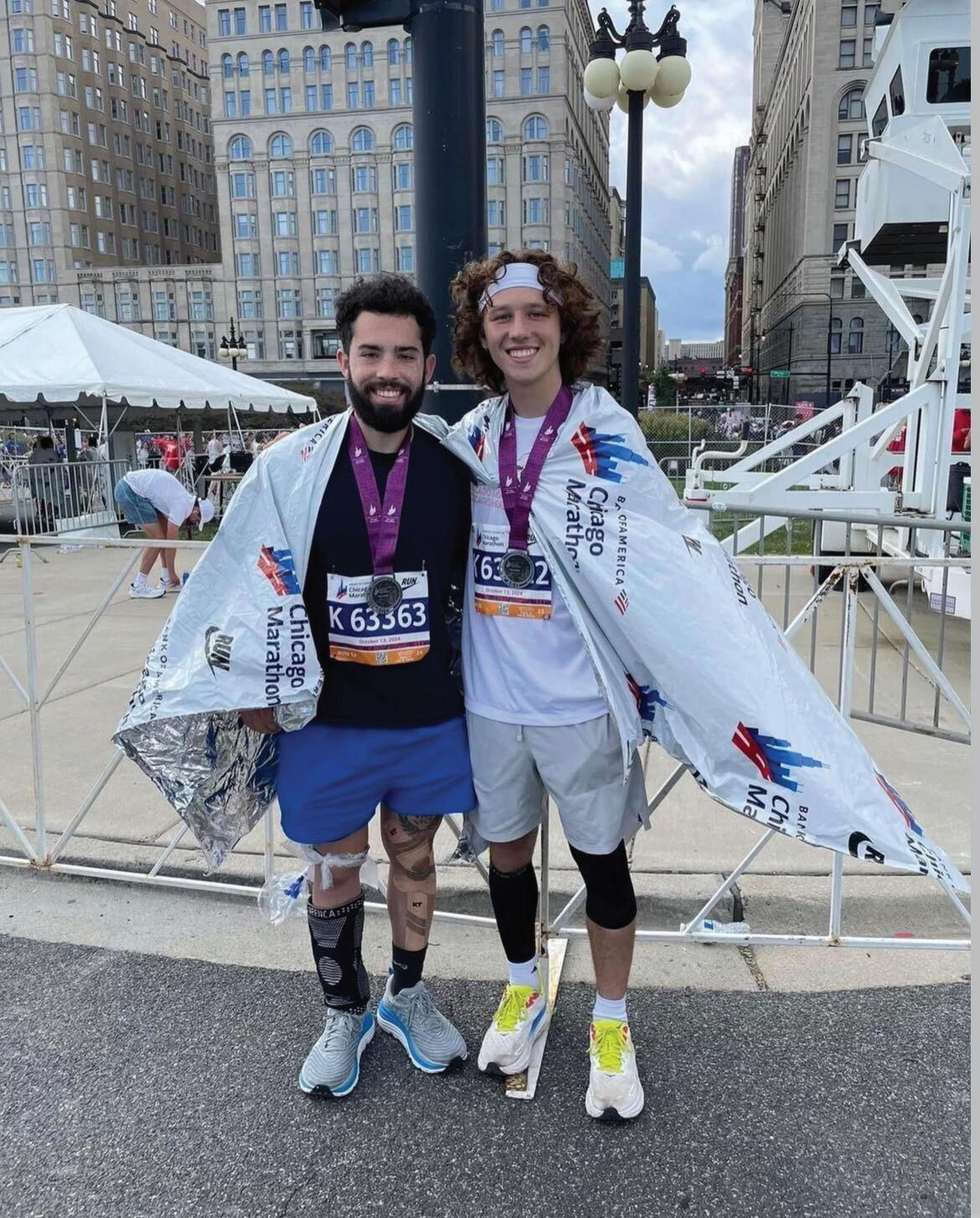
education, health, etc. Together, they examined the effect of sugar exposure within 1,000 days of conception on diabetes and hypertension. They compared six different groups of adults to research the effects of sugar rationing exposure (exposure to sugar rationing): 5 groups who rationed sugar intake at different times of those 1,000 days and 1 group who did not ration.
The results of about 60,000 people measured in their study showed that the more months taken for rationing exposure, the lower the rate of type 2 diabetes shown to go down compared to the adults who did not experience sugar rationing. It starts at 15% when starting from in utero (inside the womb) and continues to increase in percentage as the rationing ex-
posure increases. This means that children are less likely to get diabetes at a younger age. There is a similar trend for hypertension as well. However, the reduction of risk seemed to be smaller than the type 2 diabetes risk reduction results.
So why was this experiment conducted? Over the years, as more and more sugar has been incorporated into children’s food, scientists have grown concerned about what the amount of sugar children consume now does to their health. Because of this experiment, there is more insight into what sugar does to children, especially if they are being given more sugar than needed at their age. This experiment was conducted to get a better look at the long-term effects of early sugar consumption on children.

BY DISHA GOHIL, CONTRIBUTER
In 2014, adolescents’ e-cigarette use increased rapidly, with around 13.4% of high schoolers and 3.9% of middle school students reporting past-30-day use. E-cigarettes contain a multitude of chemicals, one being nicotine, an addictive stimulant found in tobacco plants. The reason behind why nicotine is so addictive is because it triggers the brain to release dopamine, a neurotransmitter that is responsible for a person to feel happy. This feeling tends to go away after some time, causing an individual to crave more nicotine products to get the same level of satisfaction, leading to addiction. This constant use of nicotine can negatively affect a person’s health, causing cancer, heart disease, and other chronic illnesses. Nicotine is especially dangerous for teenagers as it is harmful to their developing brains and can affect their ability to learn. In addition, nicotine addiction among teenagers is far more dangerous than it is among adults because it is less likely for teenagers to quit once they start using nicotine products. Fortunately, e-cigarette and nicotine usage dropped to a 10-year low among adolescents.
In the past month, just under six percent of middle and high school students reported vaping, according to a survey conducted by the National Youth Tobacco Survey. This decline was mainly caused by high school students, with a decrease from 2.13 million (7.7%) youth in 2023 to 1.63 million (5.9%) youth in 2024.
“The continued decline in e-cigarette use among our nation’s
youth is a monumental public health win,” said Brian King, Ph.D., M.P.H., director of the FDA’s Center for Tobacco Products.
Public health experts claim that e-cigarette usage declined among adolescents due to several factors, such as city and state tobacco bans and campaigns regarding the dangers of vaping. There are worldwide campaigns that are targeted around teenage e-cigarette use, wanting to ban disposable vapes and limit access to adolescents to prevent addiction. The U.S. government has also taken this issue into consideration, as Congress pressured the FDA to increase enforcement, especially after illegal imports of certain e-cigarette flavors. As a result, the FDA emphasized how certain brands, specifically Elf Bar, a popular vape company among teenagers, are not authorized to sell their vapes. The FDA also released a campaign entitled “The Real Cost,” highlighting the dangers of e-cigarette use among youth and the difficulties of quitting.
In terms of regulation, the FDA implemented new rules in 2018, such as stronger age verification for online e-cigarette sales and the removal of e-cigarette products that are marketed to adolescents. In addition, physicians have worked to educate their patients about e-cigarettes and discouraged their use. Dr. Sharon Levy, a pediatrician and chief of the division of addiction medicine at Boston Children’s Hospital, said that there was no need for new types of flavored vapes that advertised 15,000 puffs and contained as much nicotine as 20 packs of cigarettes.
“It would be nice,” Levy said, “to actually get ahead of these things.”

honestly, it was something I needed. The past few weeks have been the funniest yet most hectic weeks of my life. So, for this weekend to be as relaxing as it was, I feel rejuvenated. Both my roommates were gone for
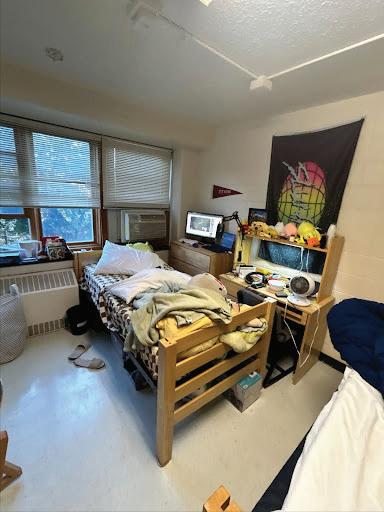
nally rearrange my side of the room for easier access to my laptop. Now, the layout of my room allows me to play games on my computer easier AND, and my roommate can finally use his desk without hitting my bed. To be honest, I don’t think I left my room a single time all weekend except in the afternoon when I left my room for my daily migration to Pierce to get my food for the day. I would eat my lunch and bring my bowl and gallon bottle so I could bring back rations for the rest of the day. The workers would stop me from filling up my gallon bottle, but by the time they stopped me, I would already have half a gallon of Brisk in my bottle anyway, so, small victories. In
terms of food, I would take three portions of whatever food they had and put it into my bowl. Anyway, the quiet allowed me to do a lot of stuff I told myself I’d do weeks ago. I finally went grocery shopping, redid my room, and practiced for my taekwondo performance on Monday. For those wondering, I played a lot of League of Legends with my friends but I also played an excessive amount of Teamfight Tactics. I went from gold four to gold two in the two days I played, so big ups. Anyway, that’s honestly all that happened to me, but sometimes the calm in the storm is good. My mom always said that noise disturbs thought, but quiet nurtures it. Until next time, toodles.

FOR MATH’S SAKE Does math help us understand the election results? Yes and no.

BY CHARLES
BEALL B.S. ‘23 & PHD STUDENT
hardest to write. Primari ly, the statistics I will cover are still preliminary as votes continue to be counted, which makes drawing conclusions a difficult and perhaps foolhardy task. They also reflect what I see as a sad state of affairs for many of the world’s leading nations and deeply uncertain times ahead. So, allaying fears or anger is also virtually impossible with just one article.
I merely want to share a perspective on the elections that has helped me process the results over the past week. This perspective starts with the argument that the wins of Donald Trump and the Republican Party fit a larger pattern of voters casting their ballots with a staunch anti-incumbent focus. Some of you may have seen the New York Times graphic of a country painting itself red as many voters shifted from a Joe Biden-Kamala Harris vote in 2020 to Trump-J.D. Vance in 2024. There are also statistics showing voters from all walks of life, especially in urban areas, making a marked shift to the Republicans as Democratic turnout dropped off.
But we could also look at a map of the United Kingdom, which painted itself red earlier this year as the Labour Party won a historic majority against the Conservatives, who had been in power for the past 14 years. Or of Japan, whose dominant center-right party has lost its long-held majority to a patchwork of center-left parties. In France, while the centrists and conservatives may be able to form a government, several left-wing parties banded together to win the most legislative seats in this summer’s snap elections. Lastly, a country bucking this anti-incumbent trend was Mexico, which elected its first woman president (and Ph.D. holder!) Gloria Sheinbaum in a landslide victory for the leftist populist party Morena, formed by Andrés Manuel López Obrador, a figure with a cult of personality similar to Trump’s.
So, is this the end of center-left parties? While the 2024 results may signal an end to a period of general Democratic dominance — holding the presidency for 12 of the past 16 years and, prior to this year, winning the popular vote for all but one presidential election since 2000—they by no means tell us that center-left or left-wing politics is on the way out. There is, nonetheless, work to be done, and I think part of that work involves a balance between stressing mathematics’ importance and showing greater compassion for many frustrated factions within the U.S.
It seems like a primary reason voters ousted many incumbent parties was the rise in inflation postCOVID. Democrats like

BY MADISON HELLER
The past few weeks have been challenging for many. I have had entire classes devoted to discussing the election and even had a class completely canceled due to the need to “process” the results. Admittedly, there has been a lot to process. For some, it was stressful; for some, it was scary, and for others, it was very exciting. But what these feelings reminded me of was what I was reading around the time the last election occurred, Piranesi by Susanna Clarke. Before I can summarize, I want to make it clear just how much emotional weight this book carries. This was my COVID-19 book, and despite its associations, I just keep returning to it, time and time again, for its themes and what it makes me feel about the world and myself. Piranesi is a story about a man, Piranesi, and how he lives in a complex structure, which he refers to as the “House.” The House
Biden and Harris struggled to connect with voters on this issue since all the stats they shared about how the economy was still great and inflation was back down to reasonable levels seemed to inadequately address how people felt worried or mad about rising costs. Sure, math and statistics give us a solid, objective understanding of complex systems, but their presentation matters when it comes to persuading others and mitigating concerns.
Similarly, we must continue to hold Republicans to account as Trump and others tout spurious mathematics or statistics on a wide range of issues. A worrisome scenario is the changing of reports by several government agencies — which has already happened before—to get better numbers for the economy, which may happen if inflation kicks up again and Trump worries about the ensuing lower approval ratings. This is a reminder for all of us, as we go into fields involving mathematics and statistics, to defend objectivity, especially when subjectivity can put people in danger.
It will be a challenging road ahead, and mathematics can only do so well at forecasting — look at the polls showing this election is close, for instance, as one solemn reminder of that. Ultimately, I believe this road will require all of us to exhibit aggressive compassion as we continue our STEM studies and continue calling out injustice wherever it arises. This is the way to defend our rights and livelihood as we eventually go out into a chaotic, yet still hopefilled, world.
is an opulent, large, and abandoned structure filled with statues from times long gone, and as we see through Piranesi’s vivid documentation, completely inescapable. The “twist” of the story, if you can call it that, is that Piranesi was not born in the structure but rather was trapped there by a man who was truly evil. A man who abused and manipulated him until he went insane and was using him to gain information about the House to potentially learn a great and secret knowledge. I say “twist” because it is greatly implied from the very beginning that Piranesi is not a reliable narrator, and all of a reader’s instincts distrust those around him and the place in which he is trapped. You find yourself rooting for him, fearing for him, caring about what he cares for, feeling his loneliness and his own insanity leaking into your interpretation of his world. I wish not to say how or why or even what his real name was prior to entrapment, but Piranesi escapes the house and comes back to the real world, and the epilogue concerns him trying to bridge the identities between who he was, who he became, and what he is to become.
I think it is exceedingly clear from that description why this was my perfect
book for 2020. Susanna Clarke is undoubtedly my favorite author, and she captures everything fantastical so beautifully and clearly. I am reaching for Piranesi once again because I feel lost and confused. I feel misled, like the world is unclear. It is a beautiful type of escapism to go where those feelings are made concrete. Our ability to empathize with heroic characters, to rejoice when they overcome their adversity and face those that imprison them and free themselves, is cathartic. I believe that the world cannot stop its wheels just because we are scared and hurting. All we can do is pick ourselves up and try again, reinvent ourselves until we can push forward, bend and not break, and try our very best to find happiness where we can.
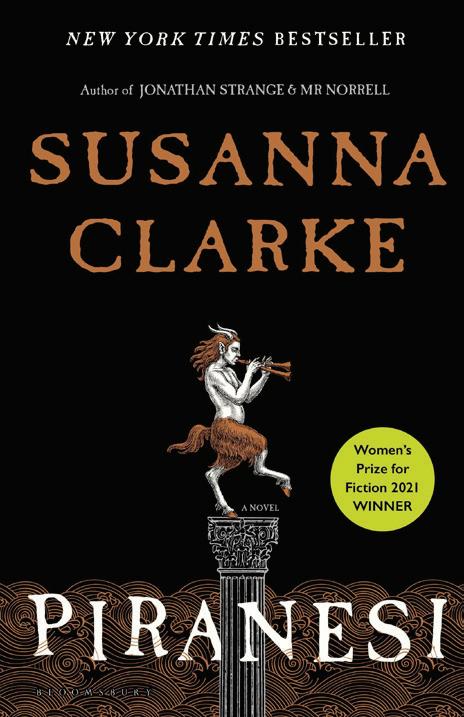
“Hello Stute Readers, We are a senior design team working on an exciting project with ChargeSafe to improve the safety of e-bike charging on campus.
We want to hear from you!
Please take a moment to scan the QR code and complete our quick survey. Your responses will help us understand student sentiment on battery safety and gather important information about e-bike use on campus. The feedback we collect will directly contribute to making Stevens a safer place for everyone who uses electric transportation.
Thank you for your time and input!”


Sometimes, you don’t feel like walking far away from campus to grab a quick breakfast, or there are days when you want to take a relaxing stroll away from campus, touch some grass, and enjoy the morning sun. When craving a reliable, quick, and delicious breakfast, bagels are the perfect solution: filling, versatile, and easy to customize. You can choose your favorite cream cheese flavor, or if you’re not a fan of cream cheese, you can opt for a bagel sandwich instead. Since college, I made the mistake of signing up for early morning classes, which often left me with little time for breakfast. And as we’ve all heard a thousand times, breakfast is the most important meal of the day since it breaks your overnight fast. Skipping breakfast because of the tight schedule between classes has started to take a toll on me — I’ve been feeling increasingly dizzy on my way to class. But yesterday, while strolling through Target’s bakery aisle, it hit me: I need to buy a reliable breakfast option for my mornings. With so many bagel places around campus, I think I’ve found the perfect solution.
On days when I’m feeling too lazy to venture beyond campus or in a rush, I stick with Canon Cafe’s cheap classic bagels. You can choose from plain, everything, or cinnamon raisin bagels, and the cream cheese options range from strawberry to plain to the heavenly, scrumdiddlyumptious scallion cream cheese. I always go for a sesame bagel, though I haven’t seen it on Grubhub yet. That combo with the scallion cream cheese is divine; the rich, creamy texture of the cheese paired with the fresh, savory flavor of the scallions is unbeatable. Some other days,

I feel like venturing out for lunch, and just a block down from campus, right as you exit the Gateway Academic Buildings on 6th and Washington Street, you will spot O’Bagel. Besides acting as a location guide for me to get to campus, their food is exceptionally delicious and reasonably priced. Let me tell you, the Fuego bagel was everything; one of my favorite cheeses is pepper jack, and paired with tender chicken and other sandwich elements, it was a melt-inyour-mouth experience. It was delicious but heavily layered with grilled chicken, pepper jack cheese, lettuce, tomatoes, and pickled jalapeños, making it hard to take a bite without it falling apart. O’Bagel itself has a minimalist, industrial vibe, very black and white, and is always packed. In the summer, they decorate the exterior with flowers, which is so pretty. They have endless options, from bagel sandwiches and regular bagels with spreads to breakfast burritos.
There’s also Bagels on the Hudson, which I’ve never tried, so maybe that’s a topic for another article where I’ll share my experience. It’s available on GrubHub, making it super convenient to order and open 24 hours. However, my absolute favorite, a staple from middle school to now, is good ol’ Wonder Bagel. I mean, it’s a classic. They don’t skimp on the cream cheese like other places do. The ratio of bagel to cream cheese is always perfect, and they have all types of cream cheese: scallion, veggie, sun-dried tomato, olive pimento, jalapeño, blueberry, strawberry, walnut raisin ... how do they expect me to choose from such a large variety of bagels and cream cheeses? Or should I go for a smoothie or a bagel sandwich? I always end up conflicted but usually settle on a sesame bagel with scallion cream cheese because I can never decide. The bagel always arrives warm and toasty and never tastes stale. Anyway, I’m glad to say I’ve found a solution to my no-breakfast problem. I could never get bored of bagels, and there are too many options to choose from.


This past summer was debatably the worst period of my life. I have had my fair share of rough patches in life with parents divorcing (multiple times), a chronic kidney disease, and a seeming magnetism of sports balls to my face. Despite all that, I honestly never felt more lost, hopeless, or, quite frankly, apathetic. However, there is always a silver lining to these sorts of things. I picked up a new hobby! Technically, a friend of mine introduced me to climbing about three years ago, but I never got too into it because life, primarily school, got in the way. So, this July I picked it back up again as a way of getting my mind off of things and keeping me in shape, a two-for-one deal! I have found I have a natural affinity for climbing in a couple of ways. Despite being short, I have got lanky arms. I am a hopeful guy, which helps with the literal leaps of faith sometimes involved. Lastly, I don’t do terribly well with letting go. That one is sort of self-explanatory.
With the personal exposition out of the way, I’d like to introduce the Baffling Bob of the week: the auto belay. Traditionally, a belayer is not a machine but a person. For safety purposes, a climber will wear a harness that is hooked up to a rope that is wrapped around a pulley at the top of a climb. The belayer takes up the slack of the rope as the climber ascends and is ready to pull the rope taut if the climber falls off the wall. But what if you don’t have any friends or want to climb solo? That is where the auto

belay comes in. You can think of an auto belay as a huge tape measure with some added features. Auto belays are situated at the top of a climb and automatically take up the slack of the rope as the climber ascends using a coiled spring, the same way that a tape measure does. But this spring isn’t nearly enough to stop you from careening down to your doom in the event of a skill issue. There are two main types of auto belay on the market today. One is purely mechanical and uses a drum brake system, and the other uses magnets. Since we have already discussed DC motors before, I am going to elaborate further on the magnetic type. The magnetic auto belay contains a non-magnetic metal disk that the rope is attached to. This metal disk is surrounded by magnets. When there is no velocity caused by pulling on the rope, there is no interaction between the metal disk and the magnets. However, when a climber falls, the disk rapidly speeds up since the rope rotates the disk. When the disk rotates and passes through the magnetic field of the magnets, circular currents of electricity are generated in the disk called Eddy currents. Circular currents of electricity generate their own magnetic

fields. These magnetic fields oppose the magnetic field of the magnets. This creates a “magnetic friction” with out the need for contact ing parts. Cooler still, the braking force generated is directly proportional to the velocity of the metal disk, so the braking effect will be experienced the same for a full-grown adult or a child, regardless of weight. This is the same principle used in ing systems. While there is no substitute for a trusty belaying partner anywhere outside of a climbing gym, tion for many recreational climbers. Regardless of how you climb your way through life, safeguards like these remind us that sometimes the best option is letting go. You can always try again!
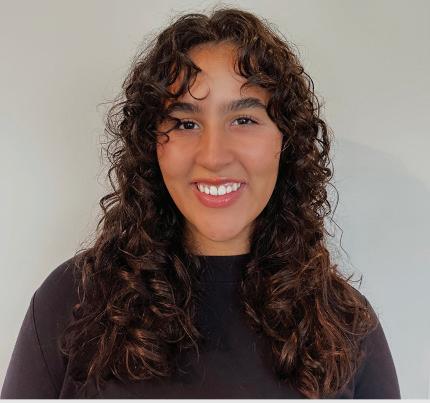
“Freedom Freedom I can’t move. Freedom, cut me loose. Singin’, freedom Freedom Where are you? ‘Cause I need freedom, too. I break chains all by myself. Won’t let my freedom rot in hell. Hey, I’ma keep running ‘cause a winner don’t quit on themselves.”
This song has been echoing in my head throughout these past months. These impactful lyrics were written by Beyonce back in 2016 with her hit album Lemonade . The song is entitled “Freedom,” and it features Kendrick Lamar. This song has been significant throughout the entire election season. As someone who is finally of legal age to vote, I began doing research and learning
about how elections work.
Four years ago, I was just sixteen years old, feeling helpless, like I couldn’t make any type of difference in the political world. I knew that when the next election came around, I would be twenty years old and ready to vote. I have always cared about politics and society, but being able to vote unlocked a passion for me.
At Stevens, I study Quantitative Social Science (QSS), which combines psychology, sociology, and political science with computer science and data analytics. I am taking a QSS course right now, and we have been discussing the election and all of the politics involved.
“Freedom” was a song used in one of the candidate’s campaigns and perfectly captured the essence of this person’s campaign. Calling for justice and freedom for everyone was something that motivated this candidate to run. Everything about this song completely emphasizes the values and morals of the candidate that used it.
Digging deeper into the song “Freedom” by Be -
yonce featuring Kendrick Lamar, we hear a resilient voice shining through the jazz organ that colors this song so uniquely. We hear this yearning voice that refuses to back down. Beyonce is telling the truth about the American Dream. She explains how she pushes through the rain and breaks down the walls. She turns into the rain, saying how she is going to rain on the bitter love and turn it sweet. Her imagery is irrepressible, and the song’s motive is clear. I personally love the lyric that concludes the chorus as it reads, “I’ma keep running ‘cause a winner doesn’t quit on themselves.” That lyric packs generations of history and resilience into a small line of song.
I think the best ingredient to a great song is a Kendrick Lamar feature. Throughout the song, we hear Beyonce calling and searching for freedom while keeping strong through oppression and defeats. Once Kendrick enters, the vibe changes to this rumbling “something’s coming” feeling. He’s explaining different scenarios that have
tarnished the American Dream, from police oppression to negative representation in the media. I think one of Kendrick’s most impactful lyrics in this song is, “and when they carve my name inside the concrete, I pray it forever reads.” This line goes right into Beyonce’s Chorus of Freedom. The two artists work so well together to make this anthem of a song. This song has been on repeat throughout this election season, helping some people get through really hard times. I think this song is beautiful, and I am happy that it has made a comeback. No matter what, I think we can all agree that Beyonce has an extremely tight grip on culture, and her music defines generations.
My recommendation this week is to stay educated about the world and politics — if not for yourself, then for the people around you that you love. Listen to Beyonce and Kendrick Lamar’s “Freedom” when you need a reminder of how strong, beautiful, and worthy you are, even in the face of oppression and defeat!
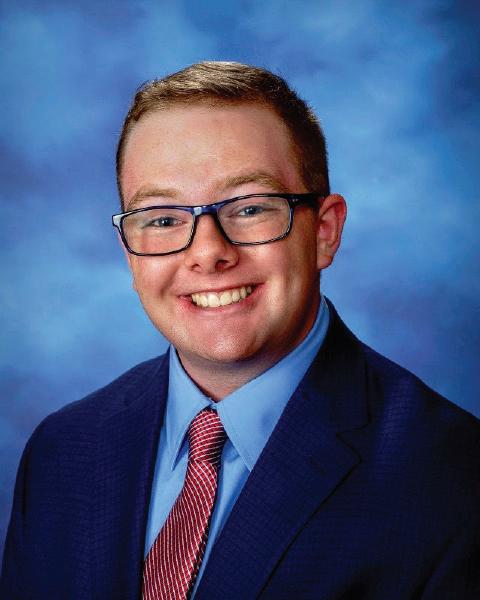
BY EVAN PAPAGEORGE ‘26
Autism is a complex interplay of symptoms that extend far beyond the diagnostic labels commonly associated with mental health conditions. From mood dysregulation and attentional challenges to trauma and anxiety, individuals with autism often present multifaceted symptom profiles that resist simple categorization. This complexity underscores the challenges in providing effective treatments and highlights the
need for a nuanced, individualized approach to care. I consulted a friend of mine, who also has autism, to learn more about autism and mood disorders.
Trauma plays a significant role in exacerbating emotional instability and complicating treatment outcomes for individuals with autism. Trauma can blur diagnostic lines between conditions like borderline personality disorder and PTSD, creating a nuanced overlap that makes targeted treatment difficult. For individuals with co-occurring trauma and mood disorders, treatment success often hinges on addressing trauma first. Evidence-based approaches like Eye Movement Desensitization and Reprocessing (EMDR) or exposure therapy offer promising pathways but require stable mental
GIRL-ISH TALK
states to ensure efficacy.
Mood dysregulation in autism is diagnostically nonspecific, yet it profoundly impacts dayto-day functioning. Dialectical Behavior Therapy (DBT), a psychotherapeutic method designed to improve emotional resilience, is considered a cornerstone in managing intense emotional states and suicidality. Unlike medications, DBT equips individuals with tangible skills to tolerate and navigate negative emotions better, making it a critical component of comprehensive care.
While pharmacotherapy remains a staple in treating mood disorders, its efficacy underperforms in individuals with autism because of side effects and the complexity of symptom profiles. The challenge lies in balancing therapeutic benefits against potential adverse effects. Medica -
tions like mood stabilizers, though commonly prescribed, may not address the moment-to-moment fluctuations characteristic of mood dysregulation in autism, leading to a often misinterpretation of their function with individuals with autism.
For treatment-resistant depression, emerging interventions like intravenous ketamine and electroconvulsive therapy (ECT) offer alternatives. IV ketamine can provide rapid relief for severe depression, though its long-term use remains experimental. ECT, widely regarded as the most effective treatment for severe depression, involves controlled seizures to trigger antidepressant effects. However, these treatments’ logistical and psychological demands necessitate careful consideration and planning.
“I’m just a girl” - every girl
Sensory issues are often overlooked in the broader discussion of autism but play a pivotal role in shaping daily experiences and emotional well-being. Hypersensitivity to sounds, textures, or lights can contribute to sensory overload, leading to anxiety, irritability, and even shutdowns. Recognizing these sensory challenges as integral to autism rather than dismissing them as “behavioral problems” is crucial for fostering understanding and inclusivity. Creating sensory-friendly environments — minimizing harsh lighting, reducing noise, or providing quiet spaces — can significantly enhance comfort and engagement for individuals with autism. These adjustments address sensory needs and create a foundation for more effective therapeutic
interventions. The complexities of autism demand a shift away from one-size-fits-all approaches to mental health treatment. Addressing the unique interplay of trauma, mood dysregulation, and sensory sensitivities requires a multifaceted strategy that combines psychotherapy, pharmacotherapy, and environmental modifications. Understanding and accommodating these nuances is not merely a clinical imperative but a societal one. By fostering environments that respect sensory differences and tailoring treatments to individual needs, we can empower autistic individuals to lead more fulfilling lives. In doing so, we pave the way for a more inclusive society where everyone can thrive regardless of their neurological makeup.
THE PHRASE
“I’M JUST A GIRL” IS GETTING MORE HEAT THAN THE PHRASE “BOYS WILL BE BOYS.” WHY NOT JUST HOLD EVERYONE TO THE SAME STANDARDS?

BY TANYA AVADIA ‘26
So, I made some interesting decisions this week. For example, I knew I had to be at work at 7 a.m. this past weekend but I still stayed awake until midnight and then couldn’t sleep due to anxiety of sleeping through my alarm. Therefore, I only
got four hours of sleep. Conversely, I had a month to do a midterm research paper for one of my classes, and I did half of it two weeks ago and the other half the day it was due. The paper had to be at least eight pages long. To both of these incidents, I say, “I’m just a girl.” But the real question is, what does that even mean?
The iconic “I’m just a girl” phrase is a social phenomenon that started out as a meme in response to the phrase “boys will be boys.” While, in essence, both phrases are derogatory and sexist, Tiktok has repurposed the “I’m just a girl” phrase into a way in which girls “justify” or
lightly make fun of something that they did poorly. Usually, TikToks on the matter are coupled with a 1995 single by rock band No Doubt titled “Just a Girl,” which is a song that calls out society for perpetuating a culture that deems women as weak and incapable.
While it is obvious that “I’m just a girl” is just a trend made popular by social media, people have interesting viewpoints on the phrase. A lot of women on social media and in real life have given the phrase a new meaning and made it into a joke that other girls and women relate to as a way to give grace to themselves and justify their

poor actions. To some, it comes off as empowering as women are held to a very high standard across the board, and when saying “I’m just a girl,” they are portraying themselves to also be human beings who are capable of making mistakes. Others online are concerned that this phrase has gone too far and is overused. Some say that it is being used to justify bad actions, which just perpetuates the belief that women are indeed incapable.
In my view, it is not that big of a deal. I personally just view this as another TikTok trend that the girlies are having fun with. While I do agree
that sometimes these social media trends get out of hand, I also believe that most people do not take these types of trends that seriously. I also find it a bit appalling that the phrase “I’m just a girl” is getting more heat than the phrase “boys will be boys.” The latter has been used to justify bad actions taken by boys and often times perpetuates rape culture. The people who take issue with “I’m just a girl” should have equal or perhaps even more issues with “boys will be boys.” After all, if you are going to call someone out on their poor behavior or actions, why not just hold everyone to the same standards?
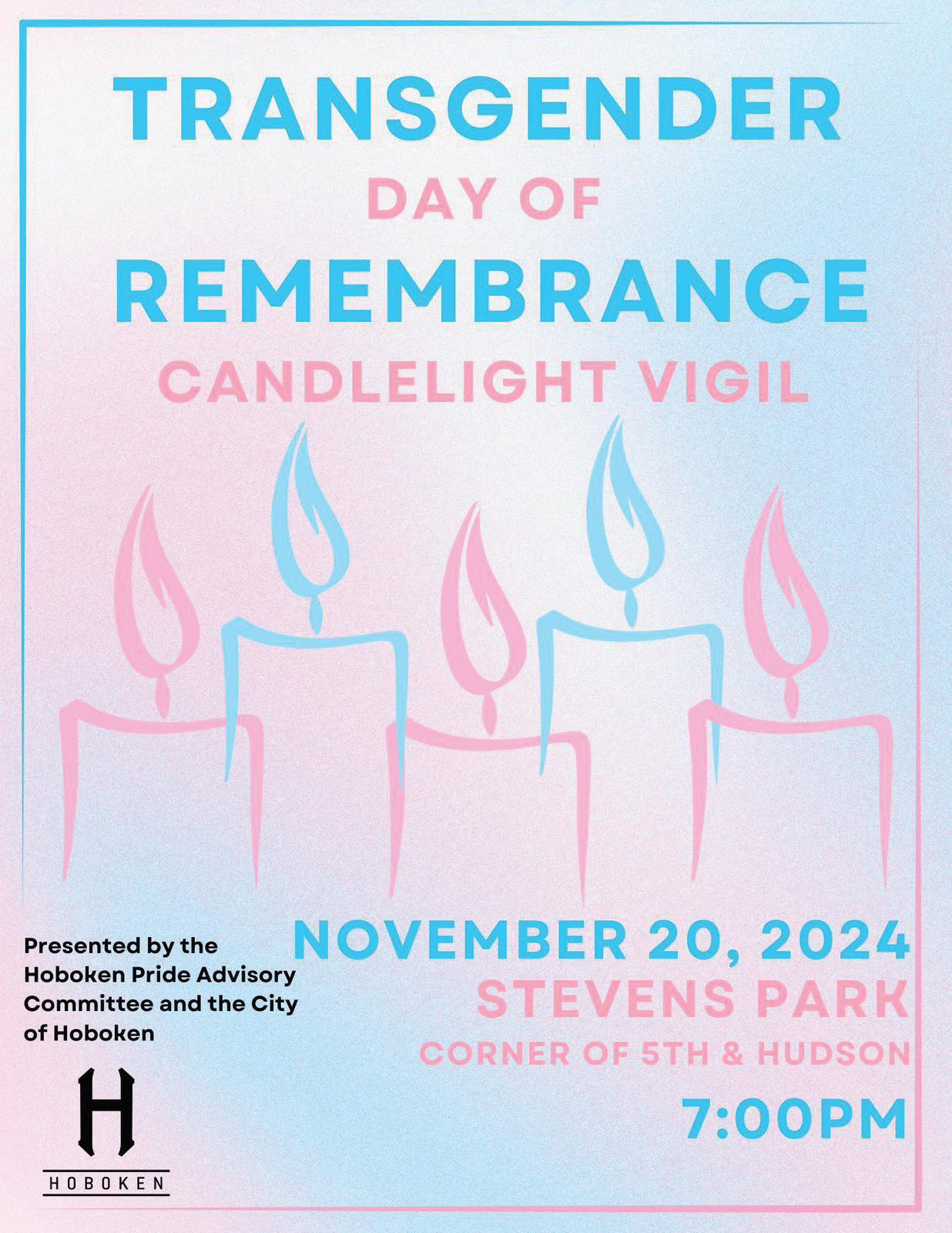




By Rafael Lee Li
“What would you do if you were a duck for a day?”


